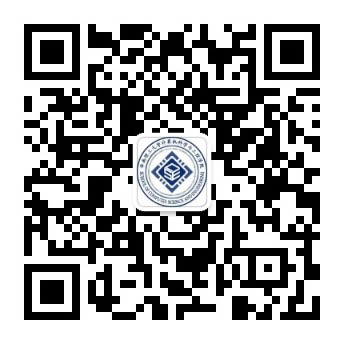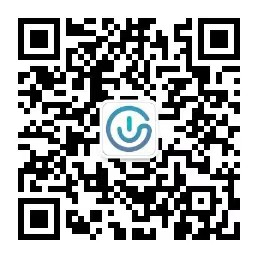《计算方法》教学大纲
课程代码 | 045101691 |
课程名称 | 计算方法 |
英文名称 | Computation Methods |
课程类别 | 专业基础课 选修课 |
课程性质 | 必修 选修 |
学时 | 总学时:48实验学时:8实习学时:0其他学时:0 |
学分 | 3.0 |
开课学期 | 6/4 |
开课单位 | 计算机科学与工程学院 |
适用专业 | 计算机科学与技术、网络工程、信息安全 |
授课语言 | 中文 |
先修课程 | 数学分析、线性代数与解析几何、高级语言程序设计 |
课程对毕业要求的支撑 | 本课程对学生达到如下毕业要求有如下贡献: 1. 工程知识:能够将数学、自然科学、工程基础和专业知识用于解决计算机复杂工程问题。 2. 问题分析:能够应用数学、自然科学和工程科学的基本原理,识别、表达、并通过文献研究分析计算机复杂工程问题,以获得有效结论。 3. 研究:能够基于科学原理并采用科学方法对与计算机相关复杂工程问题进行研究,包括设计实验、分析与解释数据、并通过信息综合得到合理有效的结论。 4. 使用现代工具:能够针对与计算机相关复杂工程问题,开发、选择与使用恰当的技术、资源、现代工程工具和信息技术工具,包括对复杂工程问题的预测与模拟,并能够理解其局限性。 |
课程目标 | 完成课程后,学生将具备以下能力: (1)掌握计算方法相关的基本概念[1/2/3]; (2)掌握各种计算方法的基本思想、推导过程、计算步骤和编程实现[1/2/3/4]; (3)掌握各种计算方法的误差估计和收敛性判断[1/2/3]。 |
课程思政 | 1. 通过在教学中对学生的严谨性和逻辑性的严格要求,逐步培养学生坚持真理、一丝不苟、实事求是的科学态度和遵章守纪的诚信观念; 2. 通过数学的有序性、简明性、对称性和统一性,培养学生的审美意识和高尚情操. |
课程简介 | 本课程主要介绍使用计算机解决某些数学问题的近似方法,课程实用性较强,在科学研究、科学实验和工程技术中都有很多的应用。通过本课程的学习,使学生不仅要掌握计算方法的基本概念、各种计算方法的基本思想、推导过程、计算过程和在计算机上如何实现,而且也要掌握某些计算方法的误差估计和收敛性判断,为今后使用计算机解决实际问题打下良好的基础。 |
教学内容与学时分配 | (一)课程目的意义和误差(2学时) 主要内容:了解计算方法在科学研究、科学实验和工程技术中的重要性;介绍计算方法在我国很多工程实践中的应用;误差的来源;误差、误差限和有效数字;相对误差和相对误差限;数值计算中的误差估计;数值计算中应注意的一些问题。 (二)代数插值与数值微分(8学时) 主要内容:线性插值与二次插值;n次插值的Lagrange形式和Newton形式;分段线性插值;Hermite插值;分段三次Hermite插值;三次样条插值;数值微分。 (三)数据拟合(3学时) 主要内容:单变量数据拟合及最小二乘法;多变量数据拟合;非线性数据线性化。 (四)数值积分(6学时) 主要内容:梯形求积公式、Simpson求积公式和Newton-Cotes求积公式;求积公式的代数精确度;梯形求积公式和Simpson求积公式的误差估计;复化求积公式;自动选取积分步长梯形法;数值方法中的加速收敛技巧——Richardson外推算法;Romberg求积法。 (五)解线性代数方程组的直接法(6学时) 主要内容:高斯消去法;LU分解法;对称正定矩阵的平方根法和LDLT分解法;向量与矩阵范数。 (六)解线性代数方程组的迭代法(7学时) 主要内容:几种常用的迭代格式;迭代法收敛性理论。 (七)非线性方程和非线性方程组的解法(4学时) 主要内容:对分法;迭代法;Newton迭代法;割线法;解非线性方程组的迭代法和Newton法。 (八)常微分方程初值问题的数值解法(4学时) 主要内容:欧拉法;龙格—库塔法;线性多步法。 |
实验教学(包括上机学时、实验学时、实践学时) | 有 |
教学方法 | 课程教学以课堂教学、课外作业、上机实验以及与授课教师的科研实践相结合等共同实施。 |
考核方式 | 本课程采用闭卷考试并结合实验、作业和考勤进行综合评估,其中闭卷考试占该课程总评成绩的70 %,实验、作业与考勤占该课程总评成绩的30 %。 |
教材及参考书 | 现用教材: 韩国强, 林伟健等编著. 数值分析, 华南理工大学出版社, 2005年 主要参考资料: [1].李庆扬, 王能超, 易大义. 数值分析(第5版). 清华大学出版社, 2008 [2]. J.H. Mathews and K.D. Fink. Numerical Methods Using MATLAB (4th Edition). Photocopy, Beijing, China: Publishing House of Electronics Industry, 2005 |
制定人及制定时间 | 何军辉,2019年4月10日 |
“Computation Methods” Syllabus
《计算方法》实验教学大纲
课程代码 | 045101691 |
课程名称 | 计算方法 |
英文名称 | Computation Methods |
课程类别 | 专业基础课 选修课 |
课程性质 | 必修 选修 |
学时 | 总学时:48实验:8实习:0其他:0 |
学分 | 3.0 |
开课学期 | 6/4 |
开课单位 | 计算机科学与工程学院 |
适用专业 | 计算机科学与技术、网络工程、信息安全 |
授课语言 | 中文 |
先修课程 | 数学分析、线性代数与解析几何、高级语言程序设计 |
毕业要求(专业培养能力) | 本课程对学生达到如下毕业要求的贡献:
|
课程培养学生的能力(教学目标) | 完成课程后,学生将具备以下能力:
|
课程简介 | 本课程主要介绍使用计算机解决某些数学问题的近似方法,课程实用性较强,在科学研究、科学实验和工程技术中都有很多的应用。通过本课程的学习,使学生不仅要掌握计算方法的基本概念、各种计算方法的基本思想、推导过程、计算过程和在计算机上如何实现,而且也要掌握某些计算方法的误差估计和收敛性判断,为今后使用计算机解决实际问题打下良好的基础。 |
主要仪器设备与软件 | PC机、编程环境(C++、Java、Python等) |
实验报告 | 每次实验需提交实验报告,实验报告的内容应包括实验目的及要求、实验环境、实验过程和实验小结等。 |
考核方式 | 本实验课程成绩将结合出勤、实验操作以及实验报告等进行综合评估,其中出勤占实验课程总评成绩的10%,实验操作占实验课程总评成绩的60%,实验报告占实验课程总评成绩的30%。 |
教材、实验指导书及教学参考书目 | 实验指导书与参考书:
|
制定人及发布时间 | 何军辉,2019年4月30日 |
《计算方法》实验教学内容与学时分配
实验项目编号 | 实验项目名称 | 实验学时 | 实验内容提要 | 实验类型 | 实验要求 | 每组人数 | 主要仪器设备与软件 |
多项式插值与曲线拟合 | 2 |
| 设计性 | 必做 | 1 | PC机、编程环境 | |
数值积分与线性方程组求解 | 2 |
| 设计性 | 必做 | 1 | PC机、编程环境 | |
线性方程组和非线性方程迭代求解 | 2 |
| 设计性 | 必做 | 1 | PC机、编程环境 | |
特征值和特征向量/微分方程 | 2 |
| 设计性 | 必做 | 1 | PC机、编程环境 |
“Computation Methods” Syllabus
Course Code | 045101691 |
Course Title | Computation Methods |
Course Category | Specialty Basic Courses Elective Courses |
Course Nature | Compulsory Course Elective Course |
Class Hours | Total hours: 48 Experimental hours: 8 Practice hours: 0 Other hours:0 |
Credits | 3.0 |
Semester | 6/4 |
Institute | School of Computer Science & Engineering |
Program Oriented | Computer science and technology, Network engineering, Information security |
Teaching Language | Chinese |
Prerequisites | Mathematics Analysis, Linear Algebra & Analytic Geometry, Advanced Language Programming |
Student Outcomes (Special Training Ability) | This course contributes to the following graduation requirements for students:
|
Teaching Objectives | Upon completion of the course, students will have the following abilities:
|
Course Description | This course mainly introduces the approximate method of using computer to solve some mathematical problems. The course is practical and has many applications in scientific research, scientific experiment and engineering technology. Through the study of this course, the students will not only master the basic concepts of computing methods, the basic idea of various methods of calculation, derivation process, the calculation process and implementation on computer, but also master some of the calculation method of error estimation and convergence judgment. And it will lay a good foundation for the future use of computers to solve practical problems. |
Instruments and Equipments | PC, programming environment (C ++, Java, Python, etc.) |
Experiment Report | Each experiment must submit an experimental report, the experimental report should include the contents of the experimental requirements, experimental environment, experimental process and experimental summary. |
Assessment | The experimental result will be evaluated with a comprehensive assessment, including attendance, experimental operation and experimental reports. Attendance accounts for 10% of the total score of the experimental course, experimental operations account for 60% of the total score of the experimental course, the experimental reports account for 30% of the total score. |
Teaching Materials and Reference Books | Experimental Guidance and Reference:
|
Prepared by Whom and When | Junhui He, April 30, 2019 |
“Computation Methods” Experimental Teaching Arrangements
No. | Experiment Item | Class Hours | Content Summary | Category | Requirements | Number of StudentsEach Group | Instruments, Equipments and Software |
Polynomial Interpolation and Curve Fitting | 2 |
| Design | Compulsory | 1 | PC, programming environment (C ++, Java, Python, etc.) | |
2 | Numerical Integral and Solution of Linear Equations | 2 |
| Design | Compulsory | 1 | PC, programming environment (C ++, Java, Python, etc.) |
3 | Solving Linear Equations and Nonlinear Equations | 2 |
| Design | Compulsory | 1 | PC, programming environment (C ++, Java, Python, etc.) |
4 | Eigenvalue and eigenvector / differential equation | 2 |
| Design | Compulsory | 1 | PC, programming environment (C ++, Java, Python, etc.) |



